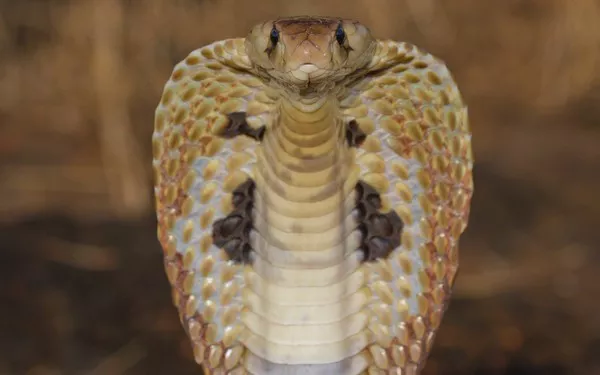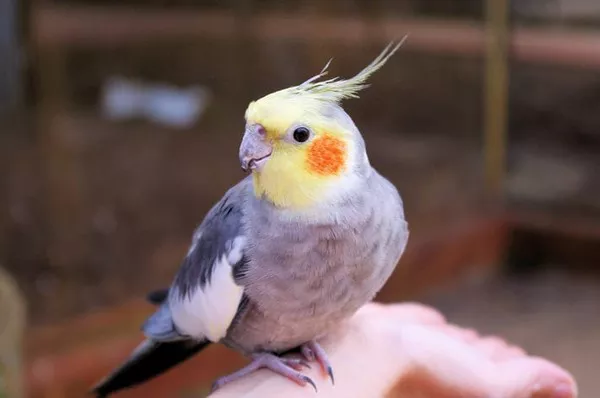Corn snakes (Pantherophis guttatus) are one of the most popular pet snakes due to their docile nature, relatively easy care requirements, and striking appearance. If you’ve recently adopted a 2-year-old corn snake, you might be wondering about its dietary needs. A healthy diet is crucial for your snake’s growth, well-being, and overall longevity. This article will provide you with an in-depth look at what a 2-year-old corn snake should eat, including its nutritional needs, feeding schedule, and how to ensure a healthy, balanced diet.
Understanding Corn Snake Diets
Corn snakes are non-venomous, constricting snakes that are native to the southeastern United States. In the wild, they primarily hunt small rodents, such as mice and rats, but they may also feed on birds, amphibians, and eggs. As a pet, their diet consists mainly of appropriately sized prey, typically small rodents. Understanding their natural feeding habits will help you provide the best diet possible for your pet.
Age Matters: Dietary Needs of a 2-Year-Old Corn Snake
When it comes to feeding your corn snake, its age plays a significant role in determining the type and quantity of food it needs. At the age of two, your corn snake is transitioning from a juvenile into an adult. It will be growing in size, developing its muscle mass, and maturing reproductively. While a hatchling or juvenile corn snake has slightly different nutritional requirements, a 2-year-old corn snake’s diet focuses more on sustaining growth, supporting muscle development, and maintaining overall health.
At two years old, corn snakes are usually between 30 and 40 inches long, and they are capable of eating larger prey than they could as hatchlings or juveniles. As you provide food for your 2-year-old snake, you will need to adjust the size of its meals to match its growth.
What Should You Feed Your 2-Year-Old Corn Snake?
In captivity, corn snakes typically thrive on a diet that closely resembles what they would consume in the wild: small mammals such as mice, rats, or other similar-sized prey. You can feed your corn snake frozen or live prey, though feeding frozen/thawed prey is generally preferred for safety and health reasons. Let’s explore some of the best food options for a 2-year-old corn snake.
1. Mice
Mice are the most common food choice for corn snakes. For a 2-year-old corn snake, you should feed it mice that are appropriately sized. At this age, it’s generally safe to offer your snake adult mice, which are typically 2-4 inches long. Depending on the size of the snake, it may eat 1-2 adult mice per feeding.
Pinkies (newborn mice): These are appropriate for younger or smaller snakes. At two years old, a corn snake will have outgrown pinkies.
Fuzzies: These are slightly older baby mice with a little more muscle mass and fur. They’re often suitable for younger or smaller snakes, but a 2-year-old should be ready for larger prey.
Adults: By the time your corn snake reaches two years old, adult mice (about 2-3 inches long) are ideal. These will provide the necessary nutrients and energy for continued growth and health.
2. Rats
As your corn snake grows, it will eventually be able to handle larger prey like rats. A 2-year-old snake may be able to consume a small adult rat (approximately 4-6 inches in length). As with mice, the prey should be appropriately sized. Offering rats every 1-2 weeks will help support your snake’s growth and energy needs. Be cautious not to offer prey that is too large, as this can lead to regurgitation, which can be stressful and harmful to your snake.
3. Other Rodents
While mice and rats are the primary food sources for corn snakes, other types of small rodents like gerbils, hamsters, or guinea pigs can occasionally be offered. However, these are generally less common in pet snake diets and may not be as readily available as mice or rats. If you do choose to feed your snake an alternative rodent, make sure it is appropriately sized and free of parasites or diseases.
4. Birds
Although birds are not a common food source in captivity, corn snakes may occasionally hunt small birds in the wild. Some experienced reptile keepers choose to offer small birds such as quail or chicks to their corn snakes. However, birds are less frequently used because they are more difficult to source and may not be necessary for your snake’s diet. Birds are also higher in fat compared to rodents, which could lead to obesity if fed in excess.
How Often Should You Feed a 2-Year-Old Corn Snake?
The feeding frequency for your corn snake depends on several factors, including its age, size, and overall health. A 2-year-old corn snake, which is still growing but no longer a juvenile, should generally be fed once every 5-7 days. However, it is important to observe your snake’s behavior to determine if it is hungry. If you offer food and your snake does not seem interested, you can wait another week before trying again.
Younger Corn Snakes: Hatchlings and juveniles are typically fed more frequently than adults. As a rule of thumb, younger snakes should be fed every 5 days.
Adult Corn Snakes: Once your snake reaches maturity (around 3-4 years old), you can typically reduce the feeding frequency to once every 7-10 days.
At two years old, a corn snake’s metabolism is still relatively fast, and it requires regular feedings to maintain its health. You’ll know that you’re feeding the right amount if your snake maintains a healthy body weight. A good rule of thumb is that the prey should be roughly the size of the snake’s widest point.
How to Feed Your Corn Snake
Feeding your 2-year-old corn snake can be done easily, but there are a few important steps to ensure the process is safe and successful.
1. Frozen vs. Live Prey
Most reptile experts recommend feeding frozen-thawed prey instead of live prey. Frozen prey is safer for both you and your snake, as live rodents may harm your snake by biting or scratching, and they can transmit parasites. Additionally, frozen prey is more humane, as it eliminates the stress and trauma of live feeding.
To feed your snake frozen prey:
- Thaw the prey by placing it in a bag and submerging it in warm water for about 15-20 minutes.
- Never microwave the prey, as it can lead to uneven heating and may cause injury to your snake.
- Once thawed, use tongs to offer the prey to your snake. Gently wiggle the mouse in front of its face to simulate movement, which will encourage the snake to strike.
2. Feeding Environment
It is best to feed your corn snake in a separate feeding area, away from its enclosure, to prevent it from associating its home with feeding. This can help reduce stress during meals and minimize the risk of your snake becoming defensive while eating.
3. Monitor Your Snake During Feeding
Always supervise your corn snake while it is eating. This helps ensure that it is consuming the food properly and prevents any potential choking or regurgitation.
4. Post-Feeding Care
After your corn snake eats, it’s important to allow it to rest. Snakes digest food slowly, and any handling or excessive movement could lead to regurgitation. It is best to leave your snake alone for 24-48 hours after a meal to ensure proper digestion.
Signs of Overfeeding or Underfeeding
Feeding your 2-year-old corn snake the right amount of food is important to avoid health issues.
Overfeeding:
If your corn snake is overfed, it may become obese, which can lead to various health problems such as difficulty shedding, lower mobility, and a shortened lifespan. Signs of overfeeding include:
- A noticeably round or bloated belly
- Difficulty moving or sluggish behavior
- Difficulty shedding skin (retained shed)
Underfeeding:
Underfeeding is another concern, especially for a growing snake. Signs of underfeeding include:
- Weight loss or a visibly thin appearance
- Lack of energy or lethargy
- Failure to grow at a healthy rate
You can measure your corn snake’s health by monitoring its weight and observing its behavior. If you notice any signs of overfeeding or underfeeding, adjust its diet accordingly.
Additional Nutritional Considerations
While a diet of rodents is usually sufficient for a corn snake, you can add variety by occasionally offering other food items. However, be mindful that too much variety can upset the balance of nutrients in your snake’s diet. Some snake owners offer supplements, such as calcium or vitamin D3, but this is typically unnecessary if the snake is eating a proper diet of appropriately sized rodents.
Hydration: The Importance of Water
Though corn snakes don’t drink water in the same way humans or other animals do, they still need fresh, clean water available at all times. Dehydration can lead to a variety of health problems, including shedding difficulties, kidney issues, and digestion problems. Ensure your snake has access to water in its enclosure, and change it regularly to keep it clean and fresh.
Conclusion
Feeding a 2-year-old corn snake is not difficult once you understand the appropriate food types, feeding schedule, and portion sizes. A healthy diet of appropriately sized rodents, a consistent feeding routine, and close observation of your snake’s health and behavior will ensure it thrives. Be mindful of its weight, hydration, and general well-being, and your corn snake will live a long, healthy life under your care.
Related Topics:
























